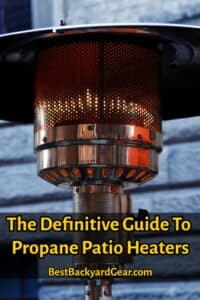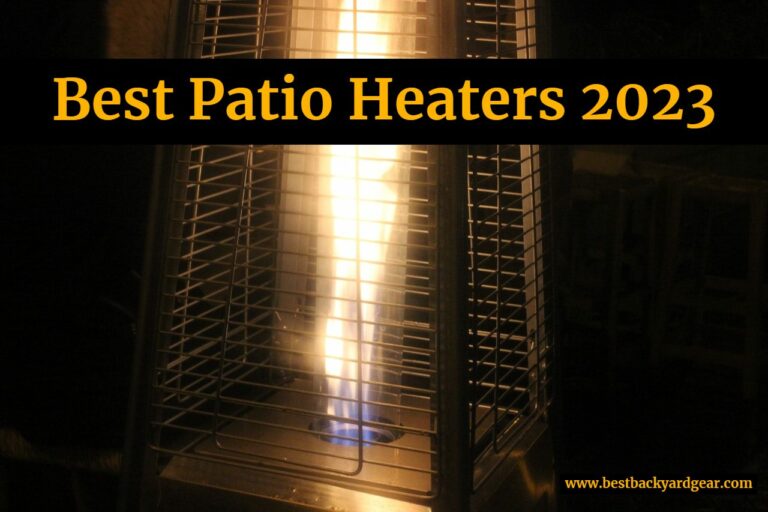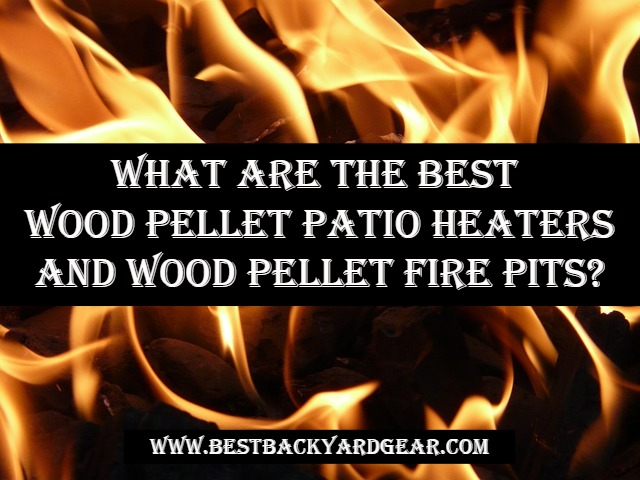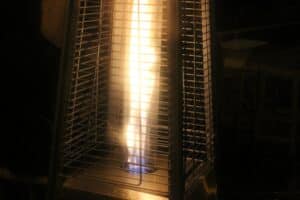 Looking for a way to make your outdoor living space cozy and inviting, even during colder weather? A propane patio heater could be the answer! These versatile and efficient heaters can provide instant warmth and comfort to any outdoor area, but with so many options available, it can be difficult to know where to start.
Looking for a way to make your outdoor living space cozy and inviting, even during colder weather? A propane patio heater could be the answer! These versatile and efficient heaters can provide instant warmth and comfort to any outdoor area, but with so many options available, it can be difficult to know where to start.
That’s why we’ve put together the definitive guide to propane patio heaters, with all your frequently asked questions answered. From safety and efficiency to maintenance and troubleshooting, we cover everything you need to know to select, set up, and maintain your propane patio heater with confidence.
So, if you’re ready to cozy up your outdoor space and extend your living season, read on!
Looking for the best? We have reviews of the best patio heaters of 2023 here at BestBackyardGear.com! Check them out!
General Information FAQs
A propane patio heater is a type of appliance used to heat up outdoor spaces like patios, decks, or even outdoor dining areas at restaurants. It’s fueled by regular propane gas (think “propane tank like what your grill uses”).
The typical design is a tall, vertical post and a metal or ceramic heating element at the top, which shoots out heat in all directions to warm up the surrounding area.
Propane patio heaters are really useful because they allow people to enjoy being outside even when it’s chilly out. They’re especially popular in places where the weather can be unpredictable, or in the fall or winter when it starts to get cooler. Often you’ll see them at restaurants on the patio.
Propane patio heaters are often equipped with safety features such as automatic shut-off switches and tilt sensors to prevent accidents. Although post are pretty big, they are portable, easy to use, and provide a convenient source of heat for outdoor gatherings and events.
There are quite a few benefits to owning a good propane heater for your patio. Here are 6 of them:
- Comfortable outdoor living in chilly weather.
- Cost-effective compared to other outdoor heating options.
- Convenient and easy to use, with minimal maintenance required.
- Safe to use with features like automatic shut-off switches and tilt sensors.
- Environmentally friendly, producing fewer pollutants and greenhouse gas emissions.
- Stylish addition to outdoor decor.
Most patio heaters that you’d buy require a standard 20-pound propane tank. There are larger ones out there that take a bigger tank (40lb), but they are pretty rare. Just read the notes on the one you’re considering purchasing beforehand. If you can, select one that takes a standard 20lb tank, so it’s easy to run out and refill (tank exchange).
Connectors and regulators vary by model and manufacturer, but usually all you need is included.
Functionality and Performance FAQs
Propane patio heaters use propane gas as fuel to produce heat. The gas is burned in a heating element, which heats up a reflector that radiates the heat outwards to warm the surrounding area.
It’s not hard at all, and very similar to lighting your gas grill. For most units, you open the gas valve, and then simply press and hold the ignition switch, releasing it once the flame is established.
It really depends on the model, and how many BTUs (British Thermal Units) it can output. Most units can produce anywhere from 30,000 to 60,000 BTUs of heat per hour. The higher the BTU rating, the more heat the patio heater can produce, and the larger the area it can effectively warm.
Like most things, the typical lifespan of a propane patio heater will vary depending on usage, maintenance, and the quality of the materials used to make it. However, with proper care and maintenance, a high-quality unit can last up to 10 years or more.
Yes, wind shouldn’t be a problem. You do need to take precautions to prevent it from tipping over though. Most patio heaters come with a weighted base to help prevent tipping.
Yes, you’ll need to get a conversion kit similar to what you’d use to convert a propane grill to natural gas.
So the good news is that they can work even in very cold temperatures. The bad news is that it won’t be as effective. The effectiveness will of course depend on the model and the BTU output, as well as the wind and humidity.
Most propane patio heaters are designed to operate in temperatures as low as 30-40 degrees Fahrenheit (-1 to 4 degrees Celsius). When temperatures drop below this range, the propane in the tank may not vaporize correctly, which can cause issues with the heater’s performance.
Yes, unfortunately insects will swarm to both the heat and light emitted from the heaters. There’s not a ton you can do about it, but keeping the area around the heater clean and free of food and drink residue should minimize bugs somewhat.
Yes, they can potentially harm plants if they are placed too close and the heat is too intense. The heat can dry out and wilt leaves, and in extreme cases, this can even kill the plants. Simply add some distance if you are noticing any early signs of wilting.
Cost and Efficiency FAQs
When it comes to the cost of running a propane patio heater, it depends on the price of propane in your area, the BTU output, how long you use it, and how fuel-efficient the model is.
The price of propane in your area can make a big difference. On average (at time of writing), propane costs around $2.70 per gallon in the United States, but this can vary based on your location.
A typical heater with a BTU output of 40,000 may use between 1.5 to 2 pounds of propane per hour. Based on these estimates, running the heater for one hour could cost roughly between $1.00 – $1.50.
On average, a 20-pound propane tank will last for approximately 10 hours of use.
Safety FAQs
Propane patio heaters are generally safe to use, but use common sense and keep it away from flammable materials, use as the manufacturer intends, and never leave it unattended.
Yes, propane patio heaters can give off carbon monoxide. Make CERTAIN that where you set it up has proper ventilation, and never use it in an enclosed or poorly ventilated space. Read more on carbon monoxide poisoning.
Propane patio heaters are designed for outdoor use only (in well ventilated spaces) and should never be used indoors. The reason for this is pretty simple: heaters generate heat by burning propane, which produces carbon monoxide and other harmful gases that can be deadly in enclosed areas.
While it’s technically possible to use a propane patio heater in a gazebo or under a covered porch, it’s generally not recommended since they are designed for outdoor use and need adequate ventilation to operate safely. Never forget that they can produce carbon monoxide and other harmful gases that can be dangerous if you breathe too much in.
If you do want to use a propane patio heater in a covered area though, make sure that there is at least 3 feet of clearance between the top of the heater and the ceiling. Make sure windows are left open (that there is adequate ventilation to prevent the buildup of harmful gases and reduce the risk of fire).
Yes, wooden decks are just fine, as long as the unit placed on a stable and level spot and at a safe distance from any flammable materials.
Yes, a propane patio heater can explode if it isn’t used and maintained properly. This is because propane is highly flammable and can ignite if there is a gas leak or other issues with the heater.
To prevent explosions, your best practice would be to follow the manufacturer’s instructions for use and maintenance and make sure that the heater is always kept in good condition.
Although obviously all brands will vary somewhat, most propane patio heaters come with safety features such as an automatic shut-off valve that will turn off the heater if it’s tipped over, and a safety switch that will shut off the gas supply if the flame goes out.
Set Up and Maintenance FAQs
No, shortening the stack of a propane patio heater can compromise its safety and functionality. The height of each specific heater is intentionally designed for the specific flow of gas in the unit. If you shorten it, you could be seriously endangering those sitting nearby, enjoying the heat.
Although it can vary by manufacturer, generally, they need to be placed at least 3 feet away from any combustible materials such as ceilings, walls, furniture, or foliage.
It’s going to vary by model, but most come with clear instructions and can be assembled in less than an hour with basic tools.
Most are relatively portable, but it does depend on the model and size. Some models come with wheels or handles for easy movement, but others are designed to be stationary. The product info on the unit you’re looking at will advise you about how portable it is.
It’s not recommended, as moisture can damage the heater and pose a safety hazard. It’s best to store the heater indoors or cover it with a waterproof cover when it’s not in use.
Cleaning a propane patio heater is generally easy and straightforward. You can simply wipe down the exterior of the heater with a damp cloth to remove any dust or debris. For more thorough cleaning, you can remove the burner cover and clean the burner assembly with a soft-bristled brush and mild soap and water.
Don’t forget to make sure that the heater is turned off and has completely cooled down before you attempt to clean it.
Common Problems And Troubleshooting FAQs
There are quite a few reasons why your patio heater may suddenly not be working, unfortunately. Hopefully you won’t have ANY problems with it, but should you find yourself not able to get it started or KEEP it going, here’s a chart that can help you identify the problem, and give you some suggestions for what you can try, in order to fix it.
| Issue | Explanation | What You Can Try |
|---|---|---|
| Empty or Low Propane Tank | The propane tank may be empty or running low, which can cause the patio heater to stop working. | The propane tank may be empty or running low, which can cause the patio heater to stop working. |
| Pilot Light Issues | The pilot light may not be lit or may not stay lit, which can prevent the heater from functioning properly. | Follow the manufacturer’s instructions to relight the pilot light. Make sure the gas valve is turned on and the pilot light assembly is clean and free of debris. |
| Clogged Burner Holes | The burner holes on the patio heater may be clogged with dirt, debris, or spider webs, which can prevent the gas from flowing properly. | Turn off the gas and allow the heater to cool completely. Use a soft-bristled brush to clean the burner holes, and use compressed air to blow out any debris. |
| Faulty Thermocouple | The thermocouple is a safety device that detects if the pilot light is on. If the thermocouple is faulty, it can shut off the gas supply to the heater. | Follow the manufacturer’s instructions to replace the faulty thermocouple. Make sure the new thermocouple is properly connected and positioned near the pilot light. |
| Malfunctioning Regulator | The regulator controls the flow of propane from the tank to the heater. If the regulator is malfunctioning, it can cause the heater to stop working. | Turn off the gas and disconnect the regulator from the propane tank. Inspect the regulator for damage or wear, and replace it if necessary. Reconnect the regulator to the propane tank and test the heater again. |
| Dirty or Worn Out Igniter | The igniter is the component that produces the spark to ignite the propane gas. Over time, the igniter can become dirty or worn out, which can prevent the patio heater from igniting. | Turn off the gas and allow the heater to cool completely. Clean the igniter with a soft-bristled brush and inspect it for damage or wear. If the igniter is worn out, replace it with a new one according to the manufacturer’s instructions. |
| Loose or Damaged Connections | The gas hose or fittings may be loose or damaged, which can cause a gas leak and prevent the patio heater from working. | Turn off the gas and disconnect the hose from the propane tank and the heater. Inspect the hose and fittings for damage or wear, and tighten any loose connections. If the hose or fittings are damaged, replace them with new ones according to the manufacturer’s instructions. |
| Wind-Related Issues | Strong winds can blow out the flame on a propane patio heater, or cause the heater to shut off as a safety feature. | Position the patio heater in a sheltered area or use a wind guard to protect the flame from the wind. If the heater shuts off due to wind, wait for the wind to die down before attempting to relight the heater. If the heater has a safety shut-off feature, follow the manufacturer’s instructions to reset it. |
| Gas Pressure Issues | If the gas pressure is too high or too low, the patio heater may not work properly. Low gas pressure can cause the heater to produce a low flame or not ignite at all, while high gas pressure can damage the burner and other components. | Check the gas pressure using a gas pressure gauge, which can be purchased at a hardware or home improvement store. If the pressureis too low, adjust the regulator according to the manufacturer’s instructions. If the pressure is too high, the regulator may need to be replaced. |
| Dirty or Worn Out Burner | Over time, the burner on a propane patio heater can become dirty or worn out, which can prevent the heater from producing a strong flame or igniting at all. | Turn off the gas and allow the heater to cool completely. Remove the burner and inspect it for damage or wear. Clean the burner with a soft-bristled brush and soapy water, or replace it with a new one according to the manufacturer’s instructions. |
Remember to always follow the manufacturer’s instructions and safety guidelines when troubleshooting and repairing a propane patio heater. If you are unsure about how to proceed, consult a professional.
A popping noise from a propane patio heater usually means that there is debris or insects in the burner. Turn off the heater, allow it to cool, and inspect it carefully to see if it needs a cleaning.
Unfortunately it could also mean there is a gas leak – and you’ll need to get it repaired before using it again.
A clicking noise from a propane patio heater usually means there’s a problem with the ignition system or another faulty component. Try checking the ignition switch (and the battery, if applicable) and consult your specific manufacturer’s instructions for troubleshooting steps.
A loud humming noise from a propane patio heater usually means there’s a problem with the regulator or the fuel flow.
There could be a number of reasons why it shuts off randomly. Here are 4 reasons and what you can try:
- Low propane tank pressure: If the propane tank is low on fuel or the pressure is too low, the patio heater may shut off as a safety feature. Check that the propane tank is properly connected and has enough fuel and pressure.
- Clogged or blocked burner: If the burner is clogged with debris or blocked by spider webs, it can cause the heater to shut off. Clean the burner and the surrounding area regularly to ensure proper airflow.
- Faulty thermocouple: The thermocouple is a safety device that senses if the pilot light is on and shuts off the gas supply if it’s not. A faulty thermocouple can cause the heater to shut off even if the pilot light is on. Replace the thermocouple if it’s faulty.
- Wind or drafts: Wind or drafts can blow out the pilot light or cause the flame to flicker, which can trigger the safety shut-off switch. Consider using a wind guard or moving the heater to a more sheltered location to prevent wind from affecting it.
Design And Features FAQs
Propane patio heaters come in a range of colors and finishes, including stainless steel, bronze, and black. Some models also feature decorative elements such as glass panels or intricate patterns.
There are several accessories that you can get for propane patio heaters, depending on your needs and preferences. Some common accessories include:
- Propane tank covers: These covers are designed to fit over the propane tank and protect it from the elements, while also providing a more polished look to your patio. (See Examples)
- Casters: Casters are wheels that can be attached to the bottom of the heater to make it more portable and easy to move around. (See Examples)
- Heat reflectors: These accessories are designed to reflect heat and direct it downwards, helping to increase the overall warmth and efficiency of the patio heater. (See Examples)
- Table attachments: These are specially designed tables that can be attached to the top of the patio heater, providing a convenient surface for drinks, food, and other items. (See Example)
Stay Warm, Enjoy Your Outdoor Life!
So, there you have it! We hope this FAQ post on propane patio heaters has answered all of your questions and given you the information you need to make an informed decision about which heater is right for you.
Whether you’re looking for a portable heater for your backyard, or a sleek and stylish model for your outdoor restaurant, propane patio heaters are a great way to keep you and your guests warm and comfortable.
Don’t forget to take into account factors like cost, efficiency, and safety when selecting your heater, and make sure to keep up with regular maintenance to keep it running smoothly. With the tips and advice we’ve provided, you can enjoy your outdoor living space in comfort and style, all year round!
Ready to look at a few options? We have reviews of the best patio heaters of 2023 here at BestBackyardGear.com! Check them out today!





